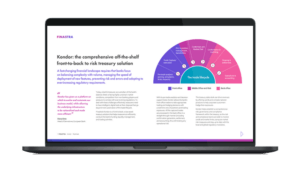ASIC issues guidance on pre-hedging for brokers
“Market intermediaries should always carefully consider their obligations under Australian law and applicable international codes and standards when undertaking pre-hedging.”

The Australian Securities and Investments Commission (ASIC) has issued a clear directive to market intermediary CEOs regarding the conduct of pre-hedging activities in Australia.
This move comes in response to recent industry concerns and a notable fine imposed on Westpac for its pre-hedging practices.
Pre-hedging raises concerns about potential conflicts of interest
Pre-hedging is a financial market practice instrumental in managing risks related to anticipated client orders. While it contributes to liquidity provision and market efficiency, it raises significant concerns about potential conflicts of interest. Market intermediaries, in their role, may have access to confidential client information, which could influence their trading decisions.
Emphasizing the importance of fair competition and market integrity, ASIC notes that varying approaches to pre-hedging among market intermediaries can lead to unfair practices and disrupt market operations. ASIC urges firms to align their pre-hedging activities with legal obligations under Australian law and international standards.
The issue of pre-hedging practices extends beyond Australian borders, attracting attention from international bodies like IOSCO, ESMA, FMSB, and the FX Global Code. These organizations are increasingly focused on setting and raising minimum standards of conduct in financial markets.
ASIC’s guidance highlights the need for stringent management of confidential information and conflicts of interest. The commission stresses that inappropriate pre-hedging can lead to unfair, unconscionable practices and poor client outcomes, ultimately harming investor confidence and market integrity.
Market intermediaries are encouraged to thoroughly review and adhere to the guidelines set forth by ASIC to ensure compliance and uphold the principles of fair and effective market functioning.
ASIC’s guidance on Pre-hedging
“In complying with obligations under the Corporations Act, including providing financial services efficiently, honestly, and fairly (section 912A), market intermediaries are required to have adequate arrangements for managing conflicts of interest and market abuse.
Market intermediaries should always carefully consider their obligations under Australian law and applicable international codes and standards when undertaking pre-hedging. Accordingly, we anticipate market intermediaries that undertake pre-hedging will:
1. document and implement policies and procedures on pre-hedging to ensure compliance with the law. They should ideally be informed by consideration of the circumstances when pre-hedging may help to achieve the best overall outcome for clients;
2. provide effective disclosure to clients of the intermediary’s execution and prehedging practices in a clear and transparent manner. Better practice includes: o upfront disclosure, such as listing out the types of transactions where the intermediary may seek to pre-hedge; and o post-trade disclosure, such as reporting to the client how the pre-hedging was executed and how it benefitted (or otherwise impacted) the client;
3. obtain explicit and informed client consent prior to each transaction, where practical, by setting out clear expectations for what pre-hedging is intended to achieve and potential risks such as adverse price impact. For complex and/or large transactions, the intermediary should take additional steps to educate the client about the pre-hedging rationale and strategy;
4. monitor execution and client outcomes and seek to minimise market impact from pre-hedging;
5. appropriately restrict access to, and prohibit misuse of confidential client information and adequately manage conflicts of interest arising in relation to pre-hedging. It is critical that appropriate physical and electronic controls are established, monitored, and regularly reviewed to keep pace with changes to the business risk profile;
6. have robust risk and compliance controls, including trade and communications monitoring and surveillance arrangements, to provide effective governance and supervisory oversight of pre-hedging activity;
7. record key details of pre-hedging undertaken for each transaction (including the process taken, the team members involved, and the client outcome) to enhance supervisory oversight and monitoring and surveillance; and ESMA in July 2023 published its report on feedback to its call for evidence on pre-hedging. The FMSB has a current working group on pre-hedging and has set out pre-hedging principles in its standard for the execution of large trades in FICC markets. The FX Global Code describes market practice for dealers undertaking pre-hedging in FX markets.
8. undertake post-trade reviews of the quality of execution for complex and/or large transactions. This should be performed by independent and appropriately experienced supervisory team members.
If pre-hedging is not carried out in an appropriate manner it can be unfair, unconscionable and result in poor client outcomes. This may adversely impact investor confidence and undermine market integrity.”









